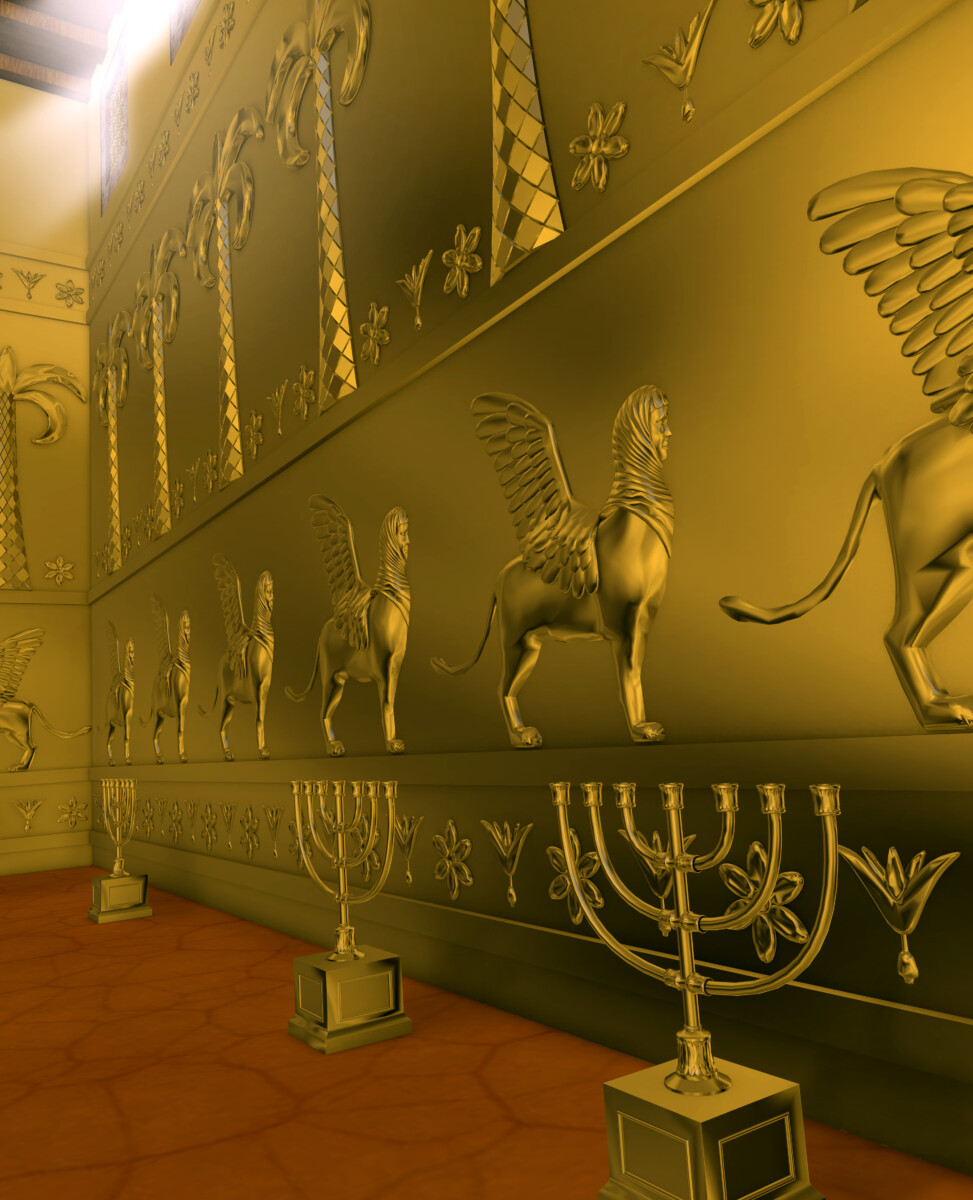The Torah invests greatly in detailing the Mishkan/Holy Temple’s construction and significance. What was the purpose of the Holy Temple? It serves as an interface beacon between us and Hashem.
This world, composed of physical matter, is our makom—our place. Hashem is the root and source of everything, also referred to as the Makom, meaning the Place. Logically, when Hashem created us, our goal became to connect from this physical realm to Him. However, this connection isn’t easy. Throughout history, Jews have attempted, often unsuccessfully, to bridge this gap.
Consider the golden calf incident: Jews, expected to connect to Hashem after receiving the Torah at Mount Sinai, faltered, turning to idolatry. To rectify this, a beacon was needed—a place to connect to Hashem. The Mishkan/Holy Temple, made of physical materials yet designed according to Hashem’s specific prescriptions, served this purpose. Once properly constructed, the Shekhinah descended, making the Temple a “makom” for Hashem’s Presence in our world.
When we pray anywhere in the world, we face the Holy Land —Yerushalayim, the Temple Mount and the Holy of Holies. This direction serves as our connector to Hashem. Thus, the Temple is both physical and spiritual—an interface connecting us to Hashem.
Our assistance comes from the Temple and the Tabernacle because on our own, attempting to transcend physicality to connect with God proves challenging—we often falter easily. Thus, in the absence of the Beit HaMikdash and the Mishkan, we turn to synagogues and study halls—our Mikdash Me’at, as the Gemara teaches. These places serve as miniature sanctuaries, where Jews gather to pray and learn.
Why the emphasis on unity in these spaces? Reb Noson elaborates: The physical world operates within the confines of natural laws, devoid of miracles. Miracles stem from the supernatural, from the spiritual realm beyond nature. The source of all miracles lies in the holy Temple, even post-destruction. The Beit Hamikdash and the Mishkan, with their dual nature—half physical, half spiritual—serve as conduits for supernatural occurrences.
The Temple serves as our conduit to draw down supernatural miracles, bridging the gap between the physical and spiritual realms
When we pray, facing the Temple, we implicitly seek miracles. Whether in a minyan or during personal reflection (Hitbodedut), all blessings and miracles originate from the Beit Hamikdash. This notion is reflected in Halacha: when one encounters a site of past miracles, one recites a blessing, attributing the miracle to Hashem’s intervention. The term “Makom” is used (שעשה לי נס במקום הזה), signifying both a physical place and symbolizing Hashem and the Temple, emphasizing that miracles flow from the spiritual realm into our physical world through the Temple.
Therefore, the Temple is essential—it serves as our conduit to draw down the light and energy of supernatural miracles into our prayers, bridging the gap between the physical and spiritual realms.
This is the essence of the Temple and why the Torah places such significance on the construction of the Mishkan. We all require this intermediary conduit—not, God forbid, to pray to it, but to connect with God. We need a physical structure infused with spirituality, mirroring our own composition—physical bodies with spiritual souls. Alone, it’s easy to falter, but unified by a structure, by collective effort, the light can descend.
Understanding this sheds light on why Haman and his sons sought to halt the rebuilding of the Second Temple. Historical background in the Megillah recounts how Cyrus the Great permitted Jews to commence the reconstruction, only for Haman’s descendants to intervene. Even King Achashverosh, while granting Queen Esther nearly any request, drew a line at rebuilding the Temple—the very heart of Jewish spirituality. Why the resistance? The Temple symbolized everything they opposed—the pursuit of an exclusively atheistic existence, materialism, and disbelief in miracles and the supernatural.
For Haman, his sons, and Achashverosh, success stemmed from worldly power and wealth, not Divine intervention. The Temple, with its promise of supernatural miracles through physical means, directly contradicted their worldview. Their opposition stemmed from a desire for self-reliance and worldly achievements, the antithesis of the Temple’s purpose.
Thus, the Temple’s greatness lies in its defiance of such worldly values. Its significance remains paramount, fueling our hope for the rebuilding of the Third Temple. As we prepare during these Shabbatot and celebrate the miraculous events of Purim, may we merit its swift realization, with the help of Hashem.
Shabbat Shalom, and have an amazing week.
Meir Elkabas

